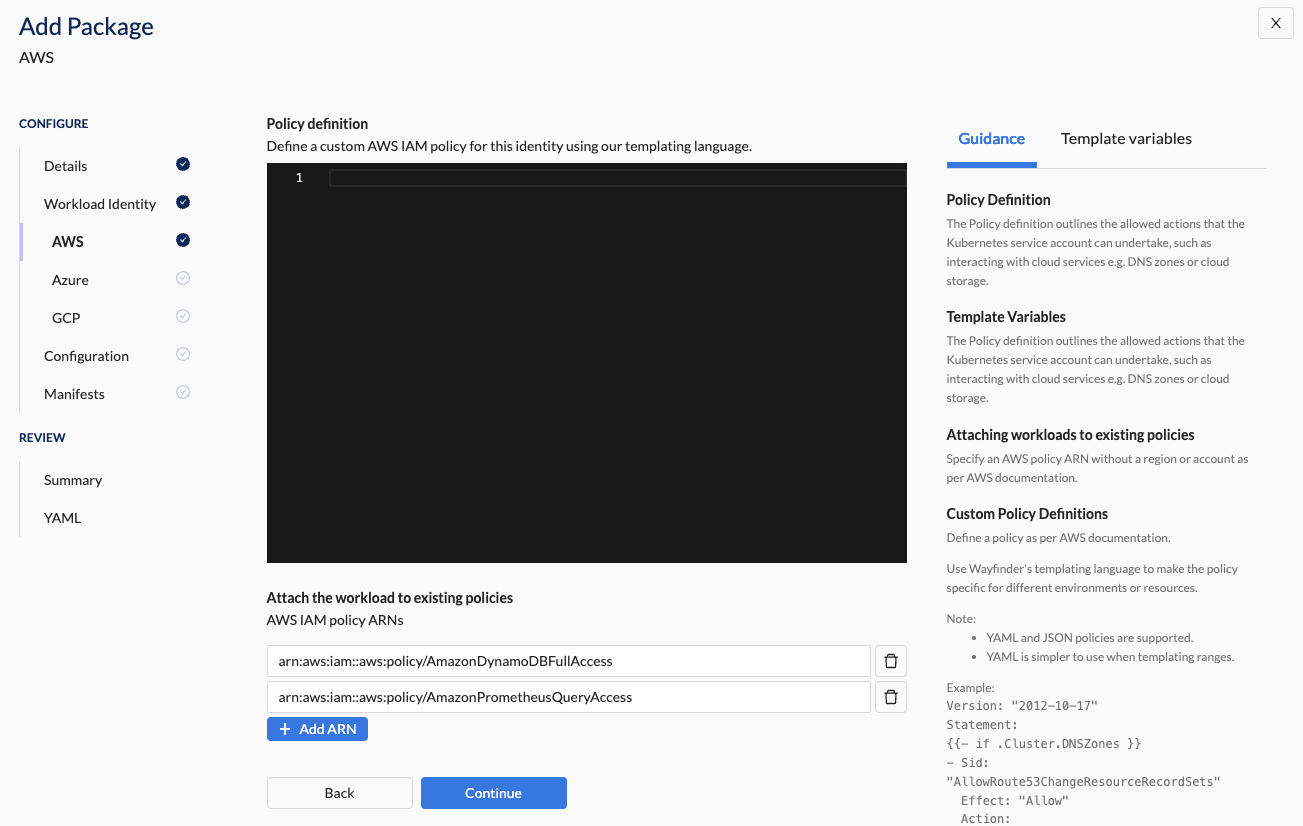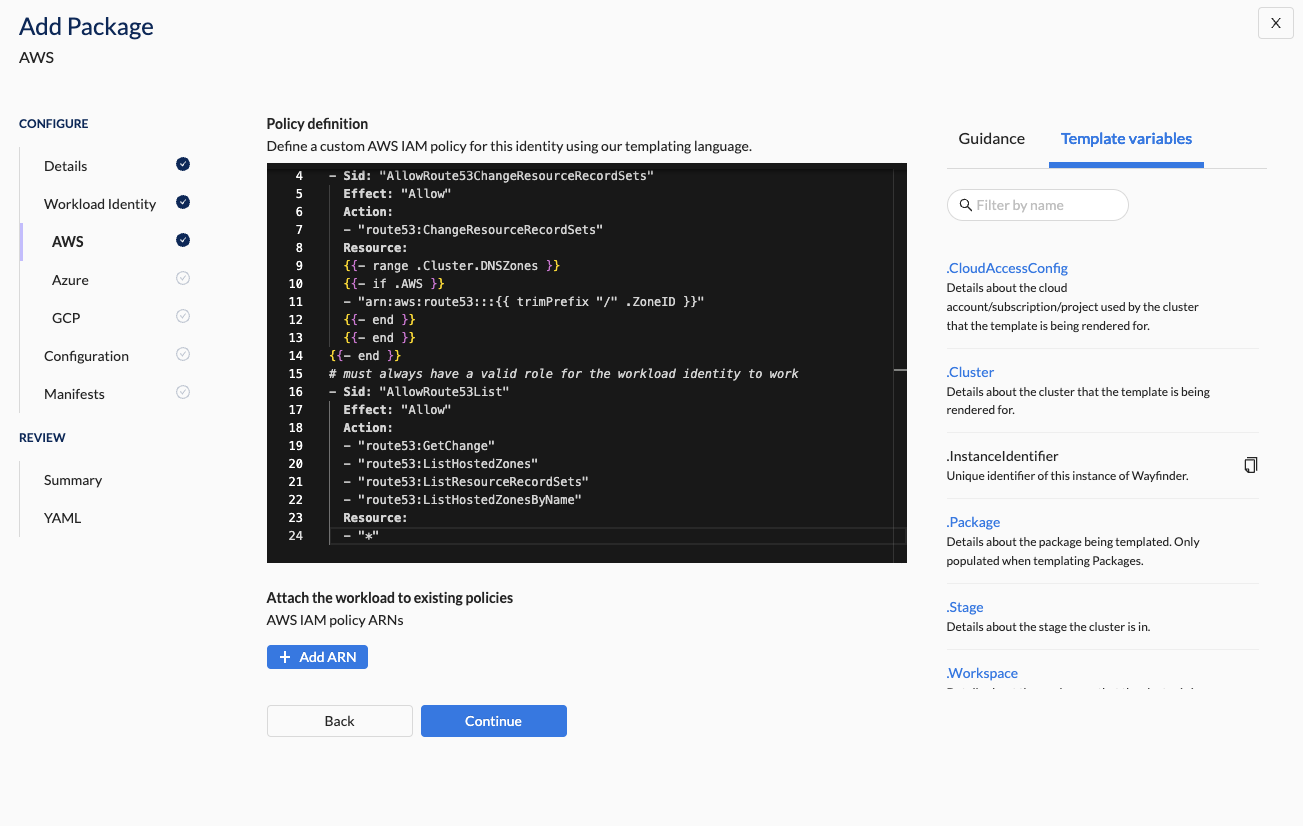AWS Policy Definition
The policy definition outlines the actions that the Kubernetes service account is allowed to undertake in AWS when running on an AWS EKS cluster, such as interacting with cloud services like DNS zones or cloud storage.
Add your policy in the YAML generated by wf init package or prepare it using the Web Interface. See the CLI instructions section for details where you selected 'yes' when asked if your workload identity required cloud access.
You have two options available when adding a policy:
- Attach the workload identity to one or more existing policies
- Define a custom policy for the workload identity
Web Interface Instructions
Steps
- Attach the workload identity to one or more existing policies:
- Click the + Add ARNs button
- Specify an AWS policy ARN without a region or account as per AWS documentation.
- Repeat above for as many AWS IAM Policies as you need
- Click the Continue button
- Define a custom policy for the workload identity:
- Use the text editor to define a policy as per AWS documentation.
- Use Wayfinder's Templating Language to make the policy specific for different environments or resources.
- See example: AWS custom IAM policy template
info
- YAML and JSON policies are supported.
- YAML is simpler to use when templating ranges.
Screenshot(s):
- Attach the workload identity to one or more existing policies:

- Define a custom policy for the workload identity:

Properties
- Attach the workload identity to one or more existing policies:
| Field | Description |
|---|---|
| Attach the workload to existing policies | The AWS policy ARN that you want to attach to the workload identity. - Specify without a region or account as per AWS documentation. - Example: arn:aws:iam::aws:policy/AmazonPrometheusQueryAccess |
- Define a custom policy for the workload identity:
| Field | Description |
|---|---|
| Policy Definition | The YAML of the custom policy definition. See example template for reference. |
What comes next?
If the package requires cloud access to other Providers, then you need to configure the corresponding Policy Definition(s):
If your package doesn't require further cloud access configuration:
Related Reading
Examples
AWS custom IAM policy template
Version: "2012-10-17"
Statement:
{{- if .Cluster.DNSZones }}
- Sid: "AllowRoute53ChangeResourceRecordSets"
Effect: "Allow"
Action:
- "route53:ChangeResourceRecordSets"
Resource:
{{- range .Cluster.DNSZones }}
{{- if .AWS }}
- "arn:aws:route53:::{{ trimPrefix "/" .ZoneID }}"
{{- end }}
{{- end }}
{{- end }}
# must always have a valid role for the workload identity to work
- Sid: "AllowRoute53List"
Effect: "Allow"
Action:
- "route53:GetChange"
- "route53:ListHostedZones"
- "route53:ListResourceRecordSets"
- "route53:ListHostedZonesByName"
Resource:
- "*"